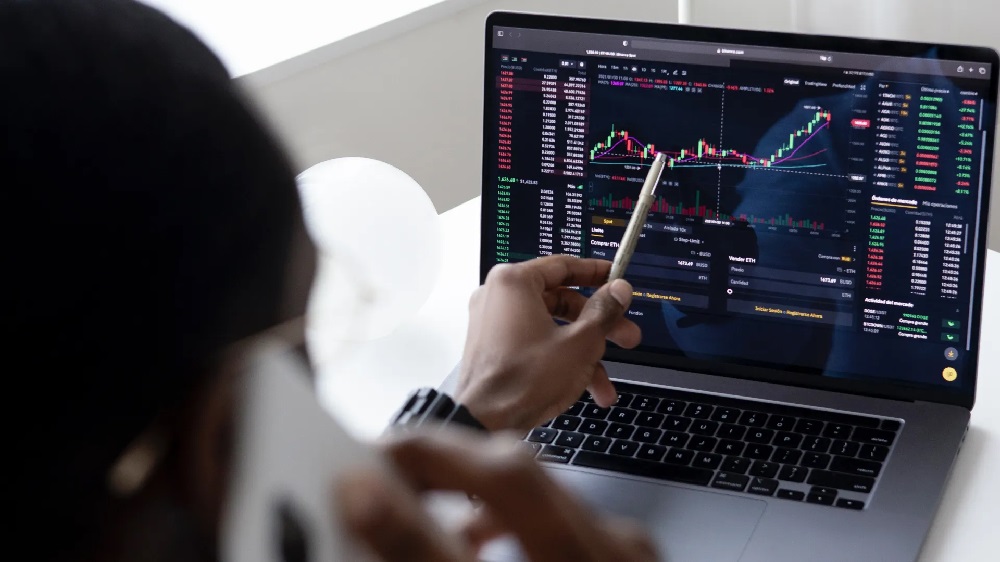Do you want to increase your trading profit and level up your trading capabilities? Perhaps algorithmic trading, also known as Algo trading, is the solution you’ve been looking for. Algorithmic trading is becoming popular in recent years. A predetermined set of conditions is used to execute trades in the trading process automatically. Due to the fast-paced and competitive financial markets, Algo trading can offer numerous advantages because it can analyze and execute trades without human intervention.
Getting started with Algo trading opens up a world of possibilities. Such as creating and testing your trading strategies, optimising your performance with back-testing, and making informed trading decisions using algorithms. This article can help if you’re new to algo trading. Here, you will learn how to get started in algo trading.
What Is Algo Trading?
Algorithmic trading involves using coded programs to identify and execute large trades on the market. Using the code created, it operates automatically. Codes can be based on price, volume, timing, or other quantitative and mathematical formulas. Algorithms execute trades automatically without human intervention when requirements specified in the code are met.
As Algo trading relies on predetermined conditions, getting the coding right is crucial. Therefore, you should test your strategy on past data before implementing it in the real world. After testing it, you can create trading signals that will execute automatically when the criteria are met. Also, it is possible to program algorithms to trade positionally, intraday, or at high frequency.
An example of Algo trading could be:
- If the 14 day moving average crosses the 200 DMA (Daily Moving Average), buy 1 lakh shares
- If14 day moving average price drops below 200 daily moving average, sell 1 lakh shares
Algorithmic Trading In India
In 2008, the Securities and Exchange Board of India allowed algorithmic trading. At first, it was only available to institutional investors like mutual funds, hedge funds, insurance companies, etc. However, as its popularity grew, it became available to retail investors as well. There are many fintech and broker companies offering Application Programming Interfaces (APIs) where users can code their own strategies or choose from the existing ones.
Algorithmic trading, according to the NIFM report published in 2018, accounts for 50% of client trades and 40% of proprietary trades. Approximately 80% of the trades on developed markets are done using algorithms.
SEBI has recently expressed concerns about algo trading. Currently, the exchange approves the Algo submitted by brokers but does not control how individuals use the API to create their own.
The SEBI has suggested that all orders routed through APIs should be considered automated trades. The stock exchange must approve the Algorithm ID for all APIs involved in Algo trading. It is also necessary for brokers to put in place a mechanism to prevent unauthorized use or alteration of their algorithms.SEBI believes these unapproved algorithms pose a risk to the market since they can be misused to manipulate the market.
How To Get Started With Algo Trading
To begin trading Algorithms, follow these steps:
Getting To Know The Market
Understanding the market is the first step in any kind of trading. Make sure you understand the instrument or market you can trade in before you jump into Algo trading. By doing this, you can develop a hypothesis for your trades.
Learn To Code
You can learn coding languages such as Python and develop an algorithm for yourself. In case you aren’t familiar with coding, you can hire a professional to do it.
Develop A Back-Testing Strategy
You must test out your algorithm before you go live. Back-test your strategy using good quality historical data from reputed sources. For confirmation that your algorithms work, you can also use third-party back-testing software. Moreover, you may need to tweak your code depending on the results.
Pick The Right Platform
In addition to your code, choosing the right broker and stock trading app to execute your trades is equally important. Choose a broker who supports your algorithm and offers various tools to optimise your trading strategy.
Go Live
The next step is to take your algorithm live once you are confident in it. Make sure you monitor its performance in the market and how it works in the real world. There are times when your algorithm does not perform the way you expect. This may require you to re-do it entirely or tweak it as needed.
Continue To Evolve
You don’t need to give up on Algo trading just because your first strategy fails. Observe what works best with different codes and continue to experiment. You can purchase Algo software that will do the job for you if you do not have the time or skills to develop your own algorithm. You should conduct research, back-test the strategies, and choose the one that is best for you.
Conclusion
In algorithmic trading, trades are executed automatically based on predetermined conditions. Its ability to analyse data and execute trades without human involvement has made it very popular among traders. However, learning to code and creating a robust back-testing strategy is crucial for this trading. Moreover, Share India can help you evolve in algo trading and maximise your performance and profits. So, get a competitive edge in the financial market by getting started with Share India.











